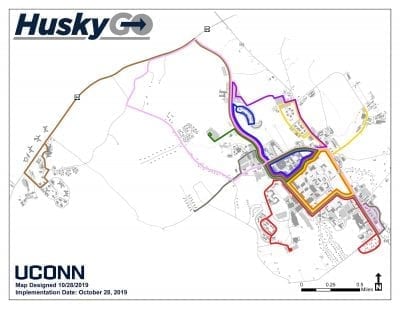Hosting a sustainable event is a tough goal to realize, but with careful planning, you can make adjustments that significantly reduce its overall environmental impacts. With an abundance of programs and activities happening each week on campus, organizing a green event is a great way to reduce your environmental footprint and encourage others to follow suit! Here are 7 easy steps to follow to get started:
- Go Paperless – Going paperless is an easy and productive first step in hosting a green event. This may include replacing paper agendas with a projection of the agenda on a TV or projector screen in the room, taking notes on a computer, and sending online invitations. In the advertising process of events, paper can be reduced by reusing the backs of used papers to print advertising flyers and printing a limited number of flyers to strategically place around campus. Social media is also a highly effective tool for event promotion.
- Reduce Transportation Needs – Choosing a central location for all of the attendees is a crucial step in reducing the transportation footprint of any event. Knowing the locations of departments and people who are attending and finding a space in between all of them can make walking or biking to the event more practical. Hopping on one of UConn’s buses or carpooling are also great solutions to reducing the carbon footprint of transportation to the event. Providing a way to attend the meeting or event virtually or to view it digitally afterwards is especially useful for large conferences that may have guests traveling by plane or longer distances. Fortunately, UConn events can be live-streamed and recorded/uploaded for free by the completely student-run organization, UCTV, by filling out an Events Filming Requests Form.

- Choose an Energy Efficient Building – Another item to consider when choosing a space for an event is the energy efficiency and environmental performance of the building space being utilized. UConn is home to many LEED certified buildings, but there are many other buildings that have undergone LED lighting retrofits and other energy efficiency improvements. Choosing one of these buildings over less efficient buildings will reduce the energy intensity of any event. Even better than choosing a LEED building, meet outside! There are many outdoor spaces on campus that can bring you closer to nature. Try a walking meeting to Horsebarn Hill or the Hillside Environmental Education Park!
- Select Eco-Friendly Catering – If an event is going to be catered, it makes sense to think about the impact of the food and dining supplies. In the U.S. alone, more than 100 million plastic utensils are used every day according to National Geographic. These plastics, as many of us know, do not break down in the environment. UConn Catering offers sustainable food options as well as biodegradable and recycled content single use dining ware. An even better step in reducing plastic waste related to dining would be investing in group-owned reusable utensils and/or plates to wash and reuse at every meeting or catered event. Additionally, always encourage guests to bring reusable containers to take home leftovers. The chance to bring Tupperware for leftover food will boost morale and improve meeting attendance! Be sure to choose food options that are lower on the food chain to make the greatest environmental impact. Ordering less meat (especially beef) eliminates the extra resources required to raise animals as opposed to growing produce. Spreading awareness on food sourcing is also a great way to encourage sustainable decision-making let amongst your attendees. Let them know if their food is local, vegan, or sustainably sourced!
- Recycle! – Making sure that any waste generated by an event is properly disposed of is fundamental to a green event. This can be ensured by checking in advance to see if the meeting space has clearly marked and paired trash and recycling bins (they should be side by side!). All meeting spaces at UConn should have recycling infrastructure, but if a room doesn’t happen to have a recycling bin in it, please contact the Office of Sustainability to address the issue.
- Buy Carbon Offsets – After an event is made as low impact as possible, there still is the matter of all the energy and carbon associated with lighting the space, powering projectors and laptops, and even embedded in the manufacturing of these products! In order to help address unavoidable greenhouse gas emissions, carbon offsets can be purchased to negate the carbon footprint of the event. One such company providing carbon offsets for easy purchase online is TerraPass. These carbon offsets don’t erase the usage of fossil fuels, but they support projects that offset emissions like reforestation or landfill gas recovery which reduces the amount of greenhouse gases in the atmosphere.
- Educate Guests – Last, but certainly not least, is the opportunity to educate your coworkers and attendees on sustainable practices. For most people, sustainability isn’t the first thing they think about at work. Many of us have grown up never worrying about where our waste goes, or where our food comes from. As events are used to gather people together to share ideas and time, they are also a great opportunity to collectively learn how to live more sustainably.
All in all, it can be relatively simple to host a green event on the UConn Storrs campus. It just takes a little bit of planning, prior knowledge, and willpower. To better spread awareness about sustainability in your office on a more continual basis, be sure participate in the Green Office Certification Program!
